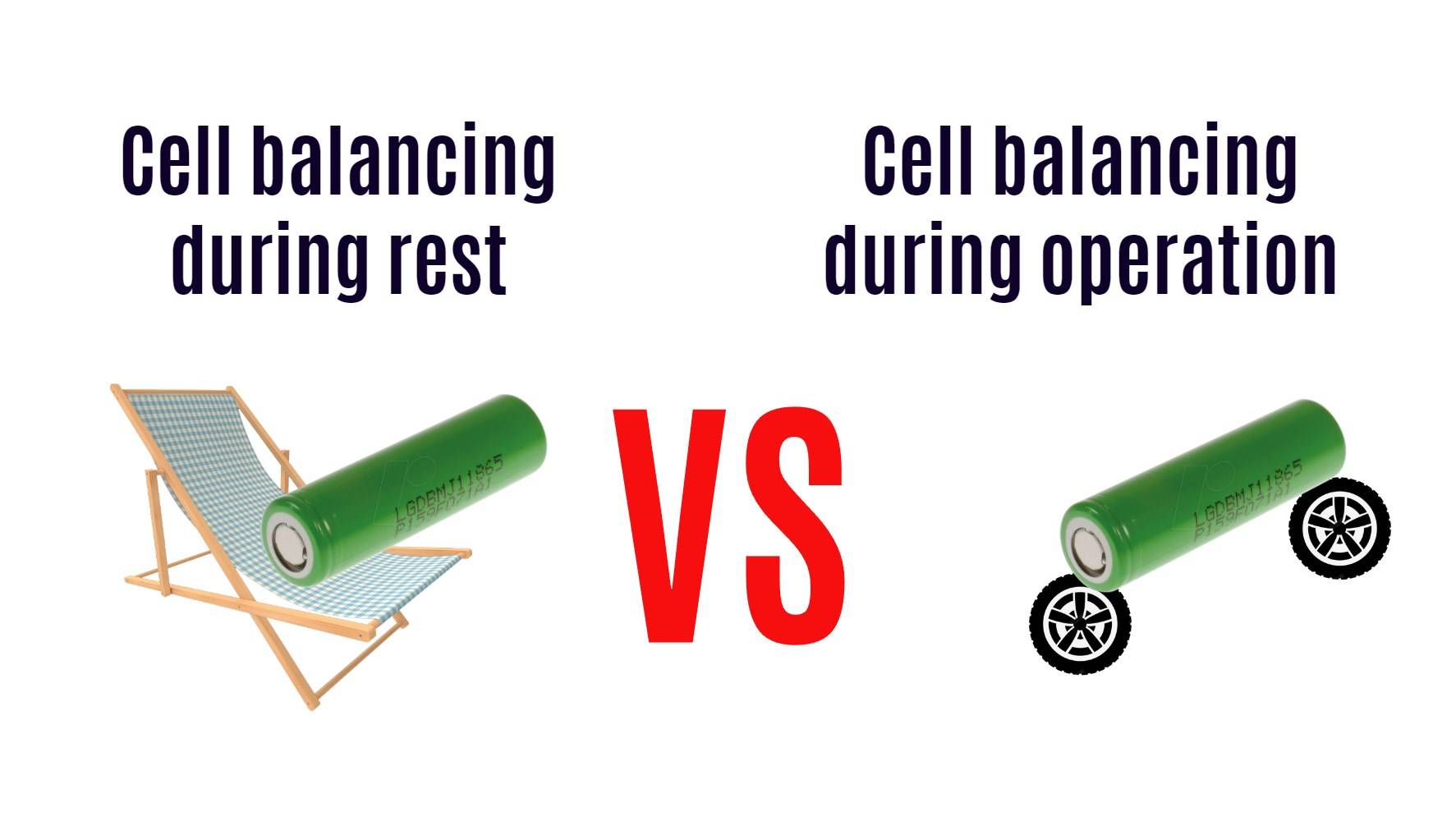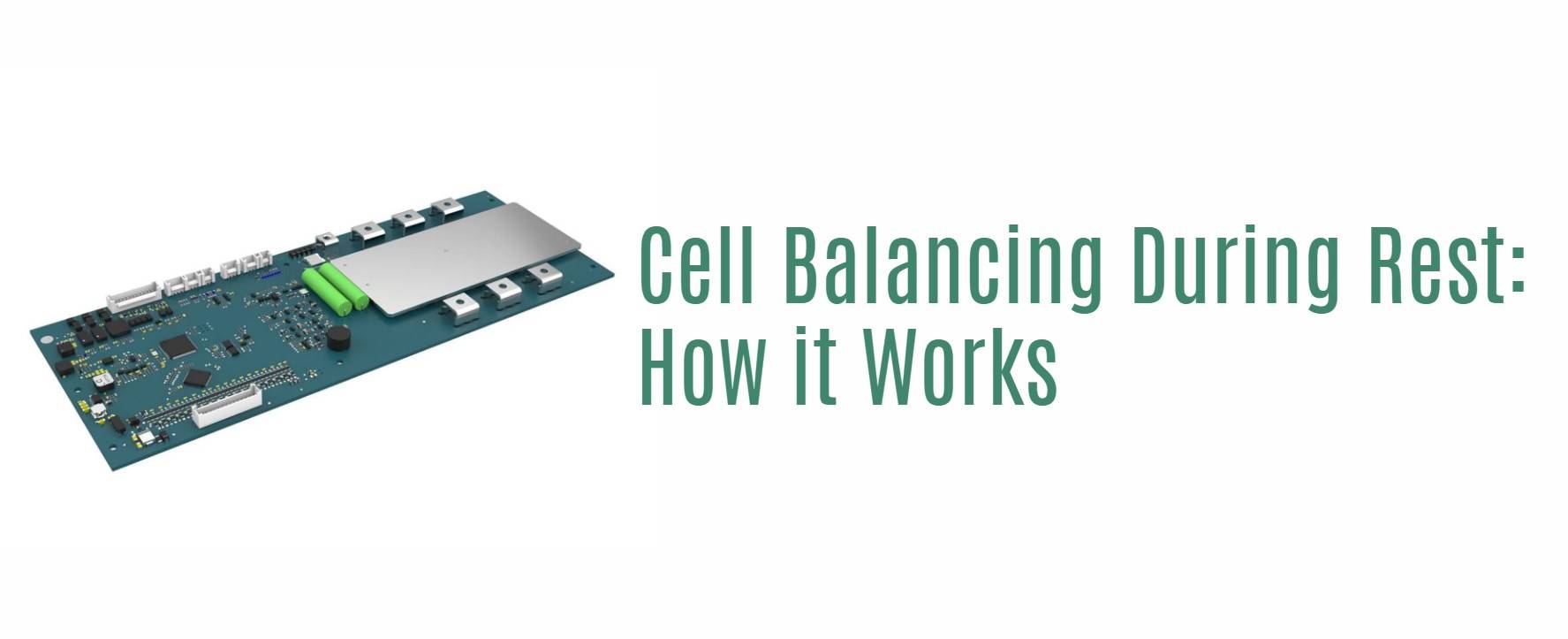Discover the world of cell balancing in Battery Management Systems (BMS) as we explore the differences between cell balancing during rest and cell balancing during operation. Learn about the mechanisms, advantages, and drawbacks of each method. Dive into the intricacies of BMS technology and unlock the secrets to optimizing battery performance and longevity. Let’s power up our knowledge on this electrifying topic together!
What is Cell balancing During Rest?
Cell balancing during rest is the process of equalizing the voltages and state of charge among cells within a battery pack when they are fully charged. It ensures that no two cells have significant differences in state of charge, self-discharge rate, capacity, impedance, or temperature characteristics. Cell balancing during rest helps maintain optimal performance and longevity of the battery pack.
Battery Management Systems (BMS) play a crucial role in ensuring the optimal performance and longevity of battery packs, especially in applications like electric vehicles and renewable energy systems. One important function of BMS is cell balancing during rest.
Cell balancing during rest refers to the process of equalizing the charge levels of individual cells within a battery pack while it’s not in operation. This helps prevent overcharging or undercharging of specific cells, which can lead to capacity degradation and reduced overall efficiency.
During rest periods, the BMS monitors each cell’s voltage and initiates balancing by redistributing energy among cells until they reach a uniform state. This ensures that all cells are operating at their full potential when the battery pack is put back into use.
By optimizing cell balance during rest, BMS helps maintain overall battery health and performance over time. It contributes to extending the lifespan of the battery pack and improving its reliability for various applications where consistent power output is essential.
Cell Balancing During Rest: How it Works
During rest, cell balancing works by continuously monitoring the voltages and state of charge of individual cells within a battery pack. If significant differences are detected, balancing actions are initiated to equalize the voltages and state of charge among the cells. This process ensures that no two cells have significant differences in state of charge, self-discharge rate, capacity, impedance, or temperature characteristics. Cell balancing during rest helps maintain optimal performance and longevity of the battery pack.
Cell balancing during rest is a crucial function in Battery Management Systems (BMS) that ensures all cells remain at optimal levels when the battery is not in use. This process involves redistributing energy among cells to maintain consistent voltage levels and extend the overall battery lifespan.
During rest, the BMS monitors each cell’s voltage and identifies any imbalances. If one cell has a higher charge than others, the system will transfer excess energy to lower-charged cells through resistors or active components like FETs. By equalizing cell voltages, cell balancing during rest helps prevent overcharging or undercharging, which can lead to reduced battery performance and capacity.
This continuous monitoring and adjustment process enable batteries to operate more efficiently and safely by promoting uniformity among all cells. Cell balancing during rest plays a vital role in enhancing battery longevity and maintaining optimal performance levels throughout its lifecycle.
Pros of Cell Balancing During Rest
Cell balancing during rest offers several advantages. It maximizes the usable capacity of the battery pack, prolongs the life of the cells, and enhances safety by ensuring that all cells have the same state of charge (SoC). By equalizing the state of charge among cells, cell balancing during rest optimizes performance, reduces stress, and minimizes the risk of cell damage and potential hazards.
Cell balancing during rest offers several advantages for maintaining the health and longevity of your battery cells. One key benefit is that it allows for a more thorough equalization of voltage levels between individual cells, ensuring optimal performance. By addressing any imbalances while the cells are not in use, it can help prevent potential issues such as overcharging or undercharging during operation.
Another advantage is that cell balancing during rest can prolong the overall lifespan of the battery pack by promoting uniform wear and tear across all cells. This helps to maximize energy storage capacity and stability over time, ultimately leading to better efficiency and reliability in the long run.
Additionally, performing cell balancing during rest can also contribute to improved safety measures by reducing the risk of thermal runaway or other hazardous situations caused by uneven cell voltages. Incorporating this practice into your battery management strategy can result in enhanced performance and durability for your system.
Cons of Cell Balancing During Rest
One consideration of cell balancing during rest is the potential for energy or capacity loss from the balanced cell(s). While this approach can equalize voltages, it may result in energy or capacity loss, which may not be ideal in certain applications.
When it comes to cell balancing during rest, there are some drawbacks to consider. One of the main cons is that this method can lead to slower overall charging times for the battery. Since cell balancing during rest requires the battery to be inactive while adjustments are made, it can prolong the time needed to reach a fully charged state.
Another drawback is that cell balancing during rest may not address issues that arise during operation. Batteries experience fluctuations and stress while in use, which may not be accurately reflected or corrected solely through resting periods for cell balancing.
Additionally, relying solely on cell balancing during rest could potentially limit the overall lifespan of the battery by not actively managing variations in voltage and capacity as they occur in real-time. This passive approach may result in imbalances persisting between cells until the next resting period, impacting performance and longevity over time.
What is Cell balancing During Operation?
Cell balancing during operation is achieved through active charge transfer from cells with higher voltage to cells with lower voltage. This technique, known as active balancing, helps maintain balance among the cells and conserve energy within the battery pack.
Cell balancing during operation is a crucial aspect of Battery Management Systems (BMS) that ensures the optimal performance and longevity of battery packs. This process involves actively adjusting the charge levels of individual cells while the battery is in use, addressing any discrepancies to maintain balanced voltage levels. By continuously monitoring and adjusting cell voltages during operation, cell balancing helps prevent overcharging or undercharging, which can lead to reduced efficiency and potentially shorten the lifespan of the battery pack.
During operation, cell balancing works by redistributing energy between cells to equalize their state of charge. This real-time adjustment helps optimize the overall capacity and performance of the battery pack, ensuring that each cell operates within its safe operating range. Additionally, active cell balancing minimizes voltage differentials among cells, promoting uniform wear and extending the overall lifespan of the battery system.
Implementing cell balancing during operation offers several advantages for battery management systems. It enhances safety by preventing overvoltage conditions that could lead to thermal runaway or other hazardous situations. Moreover, it maximizes energy utilization by ensuring all cells contribute evenly to power output, improving overall efficiency.
Despite its benefits, there are some drawbacks associated with cell balancing during operation as well. The continuous monitoring and adjustment processes require additional hardware components in BMS systems which can increase complexity and cost. Furthermore, active cell balancing may introduce additional heat generation due to increased electrical activity within the system.
In conclusion…
Cell Balancing During Operation: How it Works
Cell balancing during operation is achieved through active charge transfer from cells with higher voltage to cells with lower voltage. This technique, known as active balancing, aims to maintain balance among the cells and conserve energy within the battery pack. By continuously monitoring cell voltages and actively transferring charge, active balancing ensures that each cell operates within its optimal voltage range, promoting optimal performance and extending the lifespan of the battery pack.
When it comes to cell balancing during operation in a Battery Management System (BMS), the process is dynamic and ongoing. The BMS constantly monitors each cell’s voltage levels while the battery is in use. If any cells start to drift out of balance, the BMS takes action to redistribute energy.
During operation, cell balancing typically occurs by transferring excess charge from higher voltage cells to lower voltage cells. This helps ensure that all cells in the battery pack are equally charged and maximizes overall performance and lifespan.
By actively balancing cells during operation, the BMS can prevent issues such as overcharging or undercharging specific cells. This real-time adjustment promotes efficiency and safety, enhancing the overall reliability of the battery system.
In essence, cell balancing during operation involves proactive management of individual cell voltages to maintain optimal performance throughout usage.
Advantages of Cell Balancing During Operation
Cell balancing during operation offers several advantages for battery systems. It maximizes the usable capacity of the battery pack, prolongs the life of the cells, and enhances safety by ensuring that all cells in the pack have the same state of charge (SoC). By maintaining balanced SoC among cells, cell balancing during operation optimizes performance, reduces stress, and minimizes the risk of cell damage and potential hazards.
When it comes to cell balancing during operation in a Battery Management System (BMS), there are several advantages worth considering. This method allows for real-time adjustments to each cell’s voltage levels while the battery is in use. This helps ensure optimal performance and efficiency at all times.
By balancing cells during operation, potential issues such as overcharging or undercharging can be addressed immediately, preventing damage and prolonging the battery’s lifespan. Additionally, this approach enables better management of energy distribution within the battery pack, leading to more consistent power output.
Moreover, cell balancing during operation promotes safety by reducing the risk of thermal runaway or other hazardous conditions that can arise from imbalanced cells. Implementing cell balancing during operation offers a proactive solution to maintain battery health and enhance overall system reliability.
Disadvantages of Cell Balancing During Operation
One consideration of cell balancing during operation is the potential for energy or capacity loss from the balanced cell(s). While this approach can equalize voltages, it may result in energy or capacity loss, which may not be ideal in certain applications.
When it comes to cell balancing during operation, there are some drawbacks that need to be considered. One of the main disadvantages is the potential for increased heat generation within the battery cells. This excess heat can reduce the overall efficiency and lifespan of the battery.
Another downside of cell balancing during operation is that it can lead to interruptions in power supply. The balancing process may cause fluctuations in voltage levels, which could disrupt the performance of devices connected to the battery.
Additionally, continuous cell balancing during operation can result in higher energy consumption. The constant adjustment of cell voltages requires additional power, leading to reduced energy efficiency over time.
Furthermore, performing cell balancing while the battery is in use may introduce safety risks. Any malfunctions or errors during this process could potentially damage the battery or pose a hazard to users.
Although cell balancing during operation has its benefits, these disadvantages highlight important considerations when implementing this technique.
Cell balancing during rest vs. Cell balancing during operation
Cell balancing during rest equalizes voltages and state of charge among cells at a full charge, while cell balancing during operation actively moves charge to maintain balance during active battery usage. While cell balancing during rest focuses on achieving balance, cell balancing during operation ensures continuous balancing to optimize performance during battery operation.
When it comes to cell balancing in Battery Management Systems (BMS), both methods – during rest and during operation – have their own set of advantages and disadvantages.
Cell balancing during rest allows for a thorough equalization of cell voltages when the battery is not in use, ensuring optimal performance and longevity. On the other hand, cell balancing during operation actively monitors and adjusts cell voltages while the battery is in use, which can lead to improved efficiency but may also introduce some complexities.
In essence, choosing between cell balancing during rest or operation depends on various factors such as the specific application requirements, battery chemistry, cost considerations, and overall system design. It’s crucial for manufacturers and users alike to weigh these factors carefully to determine the most suitable approach for their needs.
Understanding the differences between these two methods can help optimize battery performance and ensure reliable operation over time. Whether prioritizing consistency through resting periods or real-time adjustments during operation, effective cell balancing remains a cornerstone of efficient energy storage management.
















